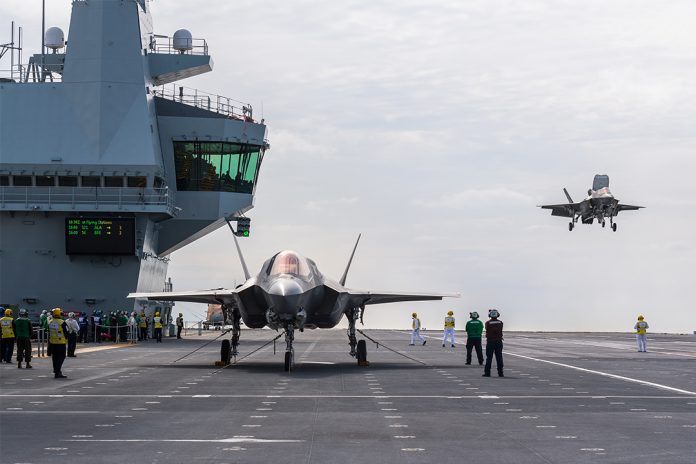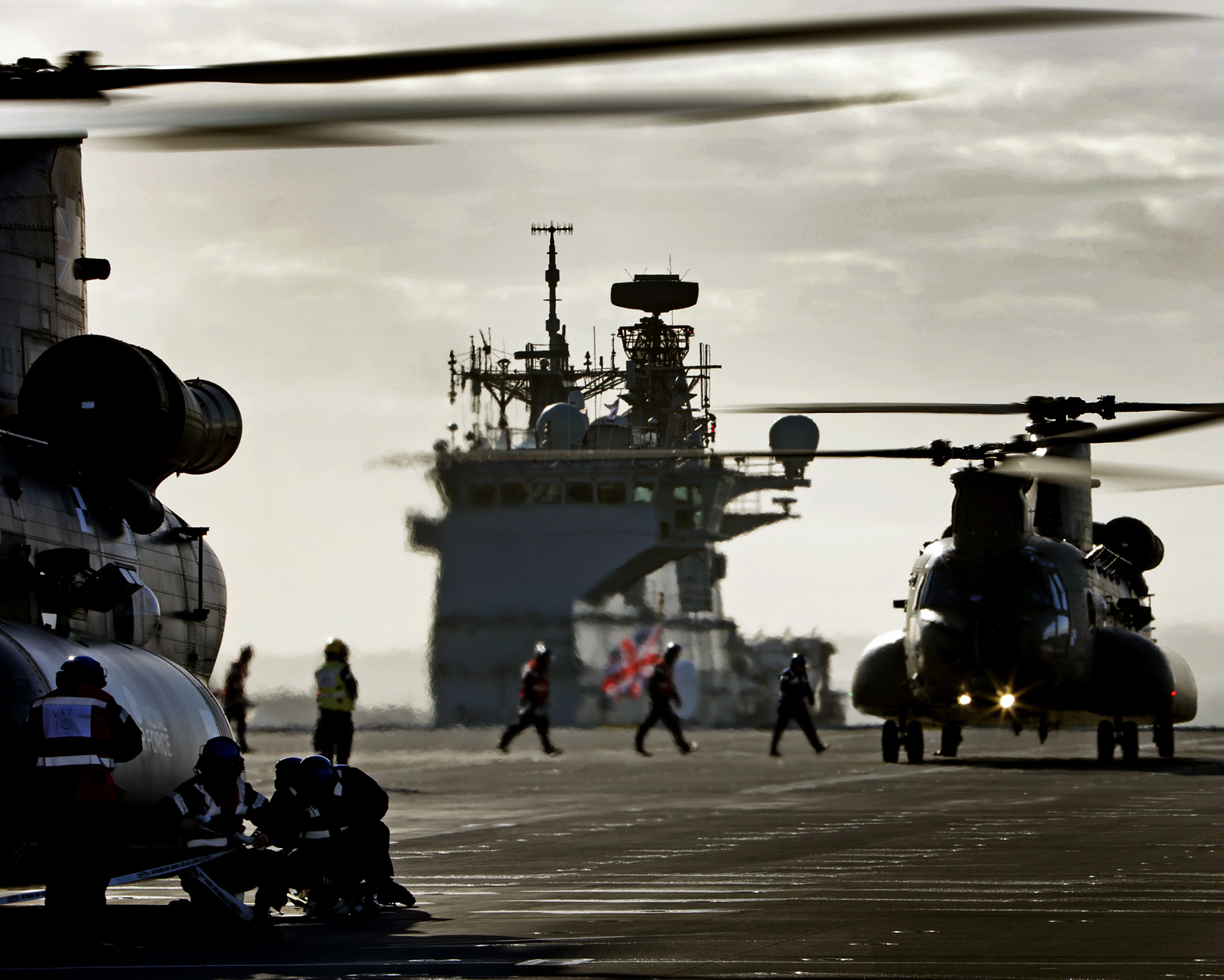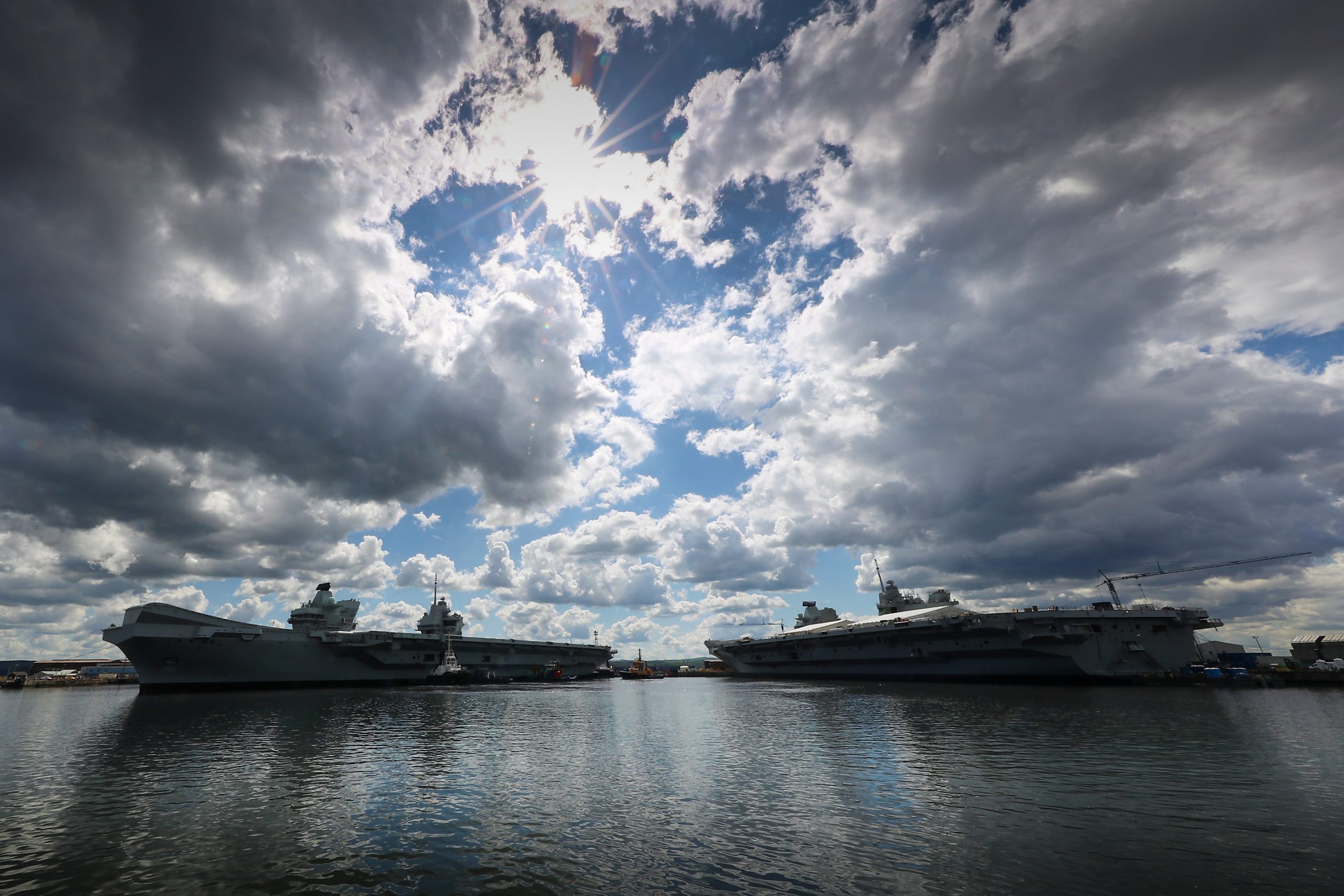
Rear Admiral Connell spoke to Armada International about the responsibility and challenges of developing the Royal Navy’s Carrier Strike capability.
“As Rear Admiral Fleet Air Arm I am a Head of a Naval Fighting Arm, responsible for the professional effectiveness, ethos and spirit of all Fleet Air Arm personnel. I act as the owner of the Queen Elizabeth-class carriers.”
So says Rear Admiral (RAdm) Martin Connell, who earlier this year was appointed to one of the most important posts in the Royal Navy (RN), that of Assistant Chief of Naval Staff (Aviation & Carrier Strike) and Rear Admiral Fleet Air Arm (ACNS (A&CS) & RAFAA).

“My responsibilities include delivering aviation Force Elements at Readiness in accordance with the RN plan and arising, contingent events. This includes all RN fixed and rotary wing assets, the two Naval Air Stations and the new generation of aircraft carriers and carrier capability. I am the lead, on behalf of the Fleet Commander, for the development of the future Carrier Strike capability. As the Navy’s Aviation Operational Duty Holder, I am personally, legally accountable for the safe execution of maritime aviation by all Royal Navy units, including aircraft, ships and submarines.
He added that it is his responsibility to accept the ships into service with a clear and smooth audit trail. “A decade of development is aimed at establishing the premier carrier operations in Europe. We have to make sure and exploit the capability of the whole carrier strike force including communications and the use of drones.
Air and Sea
Commissioned in 1987, RAdm Connell qualified as a front-line Westland Lynx Observer and his early RN career was spent at sea in various frigate and destroyer Lynx fights and as an Officer of the Watch.
In the early 1990s he became a Qualified Observer Instructor at 702 Naval Air Squadron, followed by time as a Flight Commander in HMS Coventry and Manchester as well as instructing front line aircrew in 815 Naval Air Squadron. He has had the privilege of commanding at sea at every rank from lieutenant to commodore, including HM Ships Severn, Chatham. Appointed Commanding Officer of the aircraft carrier Illustrious in 2012, one of the highlights of his captaincy was sailing the carrier up the River Thames, and through the Thames Barrier with only feet to spare each side, to Greenwich in May 2013 to mark the 70th anniversary of the climax of the Battle of the Atlantic.
RAdm Connell also served at Staff Officer to the Chief of Defence Staff working for General Lord Richards and General Sir Nicholas Houghton, and as a Naval Attaché at the British Embassy in Washington.
Myriad of Rotorcraft
The development and implementation of new on board procedures for rotary-wing aircraft has been a top priority. “We have developed well proven structures for the ship’s to operate aircraft,” RAdm Connell said, “A number of authorities including QinetiQ and REME Aviation engineers have been involved in the on-board operating procedures for Joint Helicopter Command’s (JHC) myriad fleet of helicopters. JHC brings under one command battlefield helicopters of the Royal Navy, Army Air Corps and Royal Air Force that operate the core tasks of lift, find and attack on the battlefield supporting ground forces in the land and littoral environments.
Commando Helicopter Force (CHF) is part of the JHC and was formed to bring the helicopter units which supported 3 Commando Brigade Royal Marines based in Plymouth, Devon under a single command. Its primary role is to provide rotary-wing support to the Brigade and other UK force elements in the amphibious environment.
“The JHC has its own Standard Operating Procedures (SOPs) for its helicopters but the carrier is our airfield and they have to understand and follow our on board procedures.” All the JHC helicopter types have to carry out Preliminary Ship Interface Trials (PSITs) that are a vital step in granting approval and the issuing of a Ship Air Release clearance for the aircraft to operate safely from the QEC-class carriers for training and ultimately on operations. To date these include Royal Navy AW159 Wildcats and AW101 Merlins, RAF CH-47 Chinooks, and most recently the Army Air Corps Boeing Apache AH.1, whose trials formed part of the Ship Helicopter Operating Limits (SHOL).


“We are trying to expand the clearances to cover the night envelope for US Marine Corps (USMC) MV-22 and MH-53 helicopters, and the first UK type will be the Commando Merlin HC.4s. In future we will be looking at training with other Lockheed Martin F-35 operating nations such as Italy and Japan,” said RAdm Connell. The carrier task force will be offered to NATO in mid-2020 and the focus will be global operations with basing access at Duqm Port in Oman, the only place designed to support Queen Elizabeth-class aircraft carriers in the Gulf region. Although the UK Naval Support Facility (UKNSF) in Bahrain, HMS Jufair, is not able to berth the carriers, it would be able to support them offshore.
RAdm Connell stressed that lessons learned from the QEC’s sea trials have quickly been adapted for HMS Prince of Wales. There are already 60 Royal Navy personnel aboard the second QE-class carrier before it commences its first sea trials at the end of this year. Complimentary trials will be held on both carriers from 2021 carried out by UK Joint JSF Program Office pilots and engineers based in the United States. Shipborne Rolling Vertical Landings (SRVL) trials, an innovative manoeuvre unique to the UK F-35B fleet that permits the aircraft to land onboard with heavier loads meaning that expensive fuel and weapons will not have to be jettisoned before landing, will be carried out on HMS Prince of Wales.

At the end of next year Initial Operational Capability (IOC) will be achieved that will allow US Marine Corps F-35B Joint Strike Fighters to operate from the QEC. The next milestone is 2024 when 24 British F-35Bs embarked for her maiden deployment.” RAdm Connell added that “we will also see the introduction into service of the new Crowsnest helicopter-borne airborne early warning and control system, and new missiles on Wildcat. The growth of the Royal Navy is exciting.”

He told Armada that he had good relations with the RAF and No.1 Group’s AOC, Air Vice Marshal Harvey Smyth who has responsibility for the UK’s Carrier Strike capability, with the joint RN/RAF F-35B Lightning Force based at RAF Marham when not operating from the UK’s QE-class carriers. Having worked with him in the past, he knows Air Chief Marshal Mike Wigston well, who was appointed Chief of the Air Staff on 26 July 2019. RAdm Connell is also looking forward to working with the new First Sea Lord, Admiral Tony Radakin, whom he describes as “a visionary”.
To sum up his role to date, RAdm Connell said that his biggest challenge has been to re-establish expertise of carrier operations that had been lost since the three Invincible-class carriers had been decommissioned.
by David Oliver












